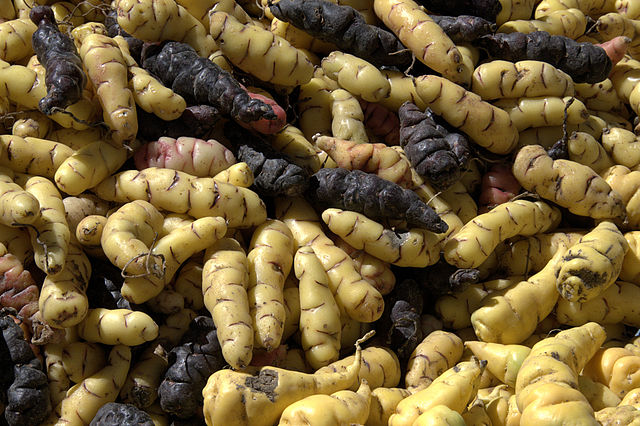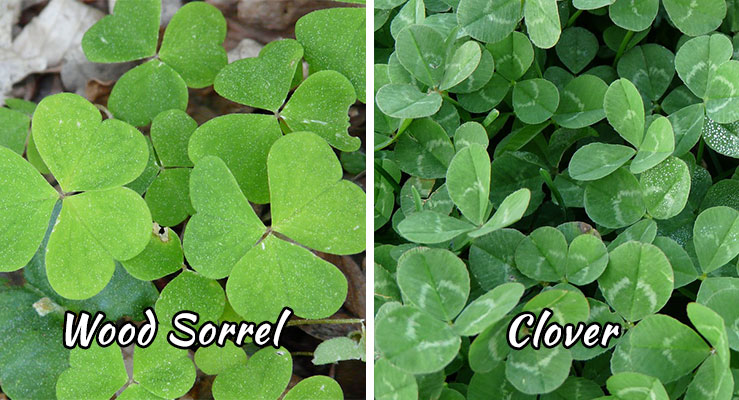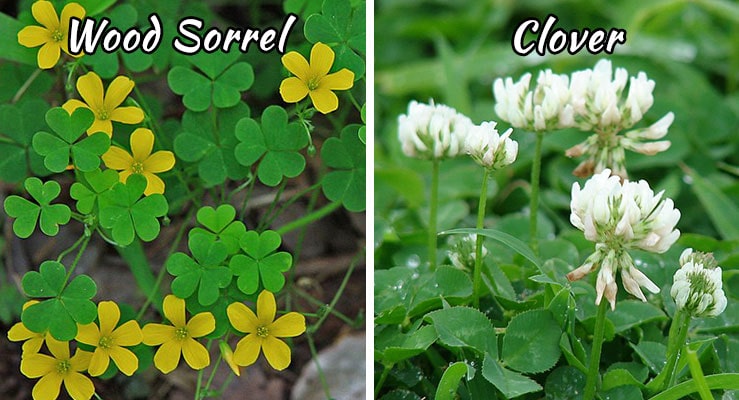Wood Sorrel Vs. Clover – Differences & Similarities
Is wood sorrel the same as clover? Here is a wood sorrel vs. clover comparison to help you understand the differences between these two plants.
Wood sorrel and clover are similar-looking plants and are often mistaken for each other. Yet, they are two different plants. Thus, in this article, we will highlight their differences and similarities.
Wood sorrels (occasionally written “wood-sorrels” or “woodsorrels”) is a name commonly used for many related and similar-looking plants in the genus Oxalis, family Oxalidaceae. Some species are also known by names based on the color of their flowers, such as “yellow sorrels” or “pink sorrels.”
Clover (or trefoil), is a common name for multiple plants in the genus Trifolium, family Fabaceae.
We can already see that woodsorrel and clover are two distinct plants as they belong to two different botanical families and genera.
Woodsorrel and clover are often confused with each other mainly due to the shapes of their leaves, but also for the way the plants grow close to the ground, often forming dense groundcovers.
Many species of wood sorrel grow as wild plants, but several of them are also grown as ornamental garden plants or potted. Some species like Oxalis tuberosa, commonly known as “oca,” are even cultivated for their fleshy and edible tubers.

On the other hand, most clover species, are mainly cultivated as fodder plants and are an important part of the alimentation of farm animals like cattle, horses, sheep, rabbits, pigs, and chickens.
In terms of lifespan, woodsorrels are either annual or perennial plants, while clover species can be annual, biennial, or short-lived perennials.
Clover And Woodsorrel Plants
At the first sight, these two plants immediately have similarities in aspect and can be easily misidentified.
As the terms “wood sorrels” and “clover” are generally used for multiple species of plants, it would be impossible to describe all of them specifically. So, we’ll only talk about some of the most common species of woodsorrel and clover, respectively the common yellow woodsorrel (Oxalis stricta) and the white clover (Trifolium repens).
Growth
The common yellow woodsorrel is generally regarded as a weed, and it is often found growing in lawns, yards, gardens, sidewalk cracks, alongside trails, as well as in woodlands, meadows, open fields, and various disturbed sites.
The white clover is widely utilized as a fodder plant and is one the most cultivated species of clover.
The yellow woodsorrel grows from mid-spring to late fall, either as an annual or perennial plant in regions with warm climates, while the white clover is a cool-season short-lived perennial plant.
Both of them have a low-growth habit and tend to form mats of crowded plants.
A common yellow woodsorrel plant is generally no taller than 6 to 8 inches (6 to 20 cm) and rarely exceeds 12 inches (30 cm) in height.
The white clover also does not grow very tall, commonly between 4 to 6 inches (10-15 cm), and do not exceed a height of 12 inches (30 cm).
Both wood sorrel and clover have an aggressive spreading. They can multiply through creeping stems (rhizomes), runners (stolons), and also by seeds.
Leaves
Woodsorrel is often confused with clover due to its leaves.
Yellow woodsorrel leaves are bright green or dark green to purplish, composed of 3 heart-shaped leaflets, with long petioles attached to thin, branching stems.

The leaves of white clover are also trifoliate (rarely with four or more leaflets), light to mid-green, oval-shaped, with long petioles, and usually with semicircular white markings on their upper side.
As you can see, the most obvious difference between the leaves of these two plants is the shape of the leaflets. While the ones of wood sorrel are heart-shaped, the leaflets of clover are egg-shaped and have a rounded margin.
Flowers
During their blooming period, wood sorrel and clover are very easy to differentiate thanks to their flowers.
The yellow wood sorrel produces tiny 5-petaled yellow flowers that can occur individually or in axillary clusters of up to 5 flowers. Other species of wood sorrel also bear white, pink, or purple flowers. The blooming period extends from July to October.

The white clover produces spherical heads of whitish flowers (often with shades of pink). Each flower head consists of 40 to 80 clustered florets. The flowers of other clover species can also be red, pink, or yellow. Clover’s blooming period lasts from June to September.
Seeds
The seeds of yellow wood sorrel are tiny, oval-shaped with a pointed tip and form in cylindrical, elongated capsules that burst explosively once ripe, launching the seeds even several meters from the plant.
The seeds of white clover are also small, have an oval shape, and have a color that ranges from yellow to orange to reddish. Other Trifolium varieties may also have seeds colored in shades of grey to almost black, or brown. Clover seeds form from the flower heads and are ready to be harvested when they dry.
Edibility
Most woodsorrel and clover species are considered edible and have been a food source for various tribes for centuries.
Both the common yellow woodsorrel and the white clover varieties mentioned above have edible parts.
The leaves of yellow wood sorrel, blossoms, and the immature green seed pods are considered edible and have a mild sour flavor. However, they must be consumed in moderate quantities because they have a rich content of oxalic acid, which in large quantities becomes slightly toxic.
The leaves and flowers of the white clover are also edible, but in their raw form are not easily digestible by humans; thus, are more often viewed as a survival food.
Final Word
Wood sorrel and clover are two plants often mistaken for each other mainly because of their trifoliate, similar-looking leaves. However, they are not botanically related and belong to different families and genera.
We hope this woodsorrel vs. clover comparison helped you to understand the differences and similarities between these two plants and aid you in identifying them easier the next time you encounter them.

